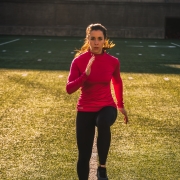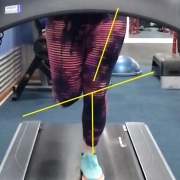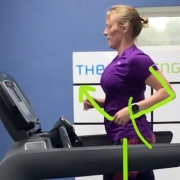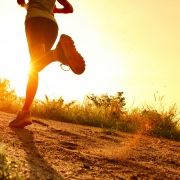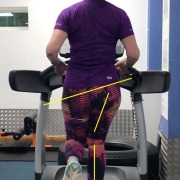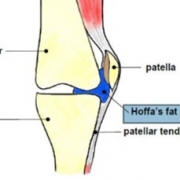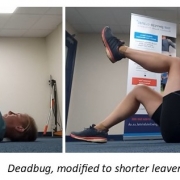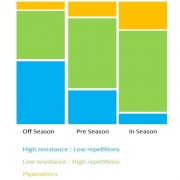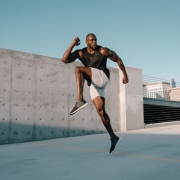Why should you get a run analysis? Episode 2… Hip level & rotation
/in Articles, Physiotherapy Advice, Running, Training, Triathlon training/by Pete TangWhy should you get a run analysis? Episode 1… Arm swing
/in Articles, Running, Triathlon training/by Pete TangBlog – Jenny’s knee injury (8)
/in Rehabilitation, Running, Strength, Training, Triathlon training, Uncategorised/by Pete TangBlog – Jenny’s knee injury (7)
/in News, Physiotherapy Advice, Rehabilitation, Running, Strength, Training, Triathlon training/by Pete TangBlog – Jenny’s knee injury (6)
/in Physiotherapy Advice, Running, Training, Triathlon training, Uncategorised/by Pete TangBlog – Jenny’s knee injury (4)
/in Physiotherapy Advice, Running, Training, Triathlon training/by Pete TangHow should strength and plyometric training vary throughout your run season and training?
/in Articles, Running, Training, Triathlon training/by Pete TangWhat are plyometrics & why should you include them in your run training?
/in Articles, Running, Training, Triathlon training/by Pete TangWhat are plyometrics?
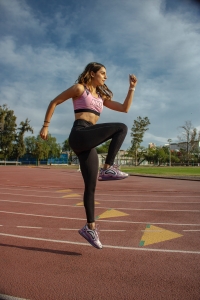
Plyometrics are a form of training that often require fast lengthening of a muscle before a contraction to perform a movement. They often involve jumping, bounding and hopping in various different activities. Hopscotch is the perfect example of this form of exercise used during our early years. This form of exercise is regularly performed in an elite sport setting to help to reduce injury but also improve performance.
How do plyometrics work?
When performing plyometric movements, muscles will go through a stretch as well as an accelerated shortening contraction. During the lengthening / stretching phase, energy is stored within the muscle and the connective tissues, then as the muscle goes into a shortening contraction, the energy previously stored is recovered to contribute to the explosive movement. This is likened to the stretching of a spring before a release back to its natural position. The more we use this style of training, the better we become at storing that energy and our ability to release energy quickly to perform a movement.
Why should runners use plyometrics in their training?
The benefits are clear for basketball players and long and triple jump athletes as to increase their ability to jump vertically or for distance. But why should it have a place in your run training routine?
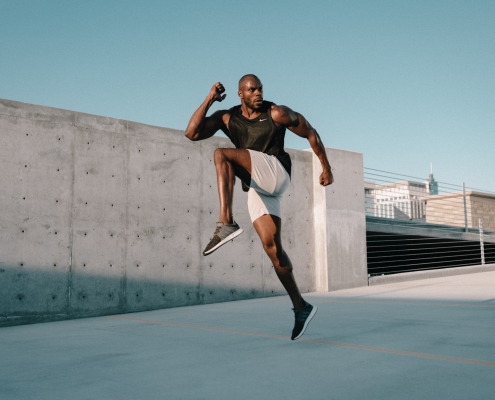 A large focus of plyometric training is being able to produce the most possible force with the least amount of ground contact time, whilst not losing all the energy you’ve created into the ground. Sound familiar? This is exactly what we go through with running. It’s all about becoming efficient with each contact we make with the floor and taking that efficiency in to the next stride. So, whether you’re struggling for speed with your runs or find yourself having heavy contacts into the floor, plyometrics could take your running to the next level.
A large focus of plyometric training is being able to produce the most possible force with the least amount of ground contact time, whilst not losing all the energy you’ve created into the ground. Sound familiar? This is exactly what we go through with running. It’s all about becoming efficient with each contact we make with the floor and taking that efficiency in to the next stride. So, whether you’re struggling for speed with your runs or find yourself having heavy contacts into the floor, plyometrics could take your running to the next level.
Where to start?
There are no official requirements to start plyometric training, however those who have experience in running and have also participated in some form of strength training will be at a good level to start adding plyometrics to their routine.
If you’re interested in learning more about how to apply plyometric training to your run training safely and effectively, contact the clinic on 01454 540066 to book a gym session with Dan.
Get in Contact
We understand that people often don't know what we do or how we can help. Don't worry we're here to help.
To ask us a question or to book an initial appointment simply call 01454 54 00 66 for our Bristol Clinic or 01291 76 99 66 for our Chepstow Clinic and one of our friendly team will assist you with your enquiry.
Alternatively, please fill in the form on the Contact page.
Connect with the Physio Clinic
Testimonials
Trustindex verifies that the original source of the review is Google. After struggling for a year with debilitating lower back pain, chronic sciatica and being post-partum, Kate Moore (physio) has helped me tremendously. She has built not only my strength back but also my confidence through her detailed, caring and passionate support. She understands the challenges of everyday working/family life and helped me integrate the rehab into that.Trustindex verifies that the original source of the review is Google. I booked in for a running analysis. Pete did a really comprehensive assessment on my recurrent ankle issues and explained things in a lot of detail to help me understand the underlying reasons for my injuries. He gave me the confidence to try running again and equipped me with the knowledge to prevent further injuries. I have seen running specialists / physios / podiatrists in the past but I felt this was the best assessment I’ve had yet. Thanks!Trustindex verifies that the original source of the review is Google. The Physio Clinic was very helpful when I thought I had sciatica. Craig found out what the problem was and gave me advice as well as exercises to do at home. Booking sessions was straightforward.Trustindex verifies that the original source of the review is Google. Saw Pete Tang at the clinic about a knee injury I'd had for a year, which another physio had struggled to properly diagnose or help with. Got a detailed diagnosis on my first visit in June along with an evolving exercise programme and was improving within a month and able to run a half marathon within three. Pete was knowledgeable, friendly and helpful and went through more advanced treatment options if the injury didn't respond – but did not push these and after three sessions told me I was good to go unless things worsened. Highly recommended – thanks!Trustindex verifies that the original source of the review is Google. I was very happy with the treatment I received from Dave and would definitely recommend.Trustindex verifies that the original source of the review is Google. Just had a neck and shoulder sports massage with Luke—highly recommend! He quickly found the problem areas and used the perfect pressure to release tension. I noticed a big difference straight away and felt so much better after. Luke is friendly, professional, and clearly knows his stuff. Would definitely book again!Trustindex verifies that the original source of the review is Google. I had three months of physiotherapy with Dave Mercy starting in June 2025 to help rehabilitate my right foot following a medically necessary operation to break and re-position my heel bone following a diagnosis tibialis posterior tendinopathy with a split tear. The physiotherapy started approx three months after surgery. Dave helped me to progress from being in an air-cast boot on my first visit and unable to put my weight through my foot, onto massages to reduce and eventually eradicate the post surgical swelling in my foot, onto a range of exercises in the gym to exercise, stretch and strengthen my foot and allow me to complete everyday activities that I can now once again enjoy. The support that Dave provided was comforting in the early days and then as the gym exercises progressed, Dave was encouraging and challenged me to develop my foot strength, flexibility, and gave me the confidence to put my full weight through my foot and complete a wide range of exercises that I didn’t think would be possible. I am walking well and whilst the finer aspects of my foot recovery will take longer to achieve, for now I can walk without the pain I previously had, which is a massive achievement. Thanks Dave, you had a hugely positive impact on my level of recovery!Trustindex verifies that the original source of the review is Google. Excellent service, very quick to get me an appointment. Katie did a very good massage on my back and calves - I feel better already :-)Google rating score: 4.9 of 5, based on 282 reviews

